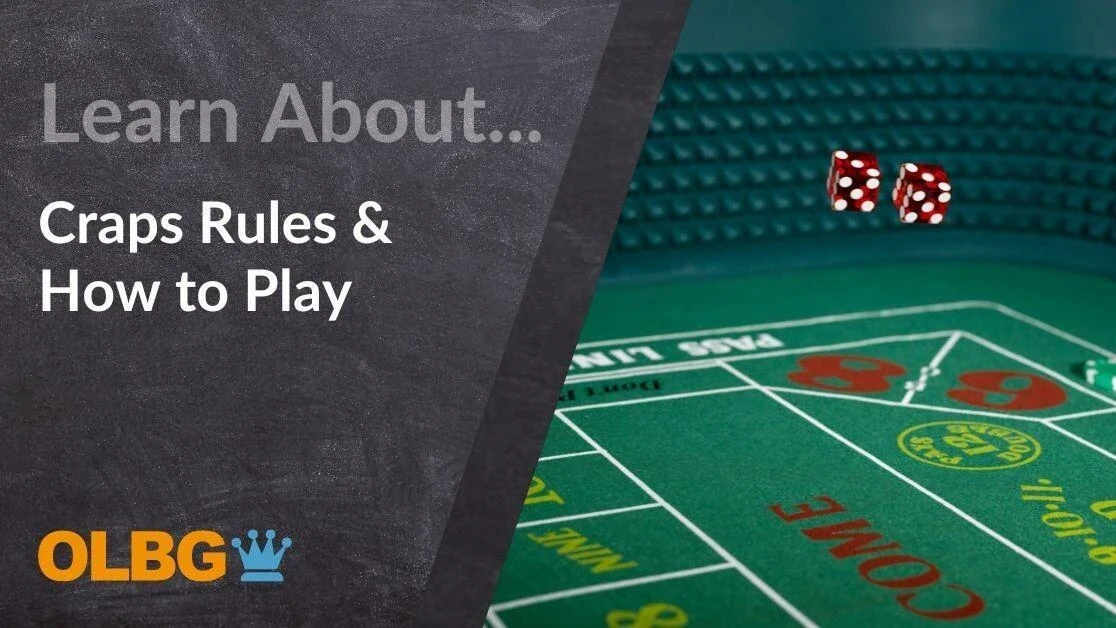
I've spent over 20 years inside the betting industry. I'll guide you to avoid the hype, ignore the noise, and steer clear of the common pitfalls that catch out everyday punters.
Emerging from its humble origins on street corners to the glittering floors of world-class casinos, the game of Craps is now available in online casino sites, continuing to captivate players globally.
Learn Craps Rules with our Comprehensive Guide!
Craps is a powerful force in the land-based casino landscape, beloved for its lively atmosphere, interactive gameplay, and tantalizing potential for large payouts. At its core, Craps is a dice game where players bet on the outcome of the roll, set against a backdrop of suspense, strategic decision-making, and the raw excitement of chance.
With our comprehensive guide, we'll help introduce you to Craps rules if you want to play online.

Comprehensive Comparison of the Top 10 Platforms for Online Craps Gaming for Real Money
Understanding the Craps Table
The Craps table might seem confusing at first with the busy layout and a wide variety of labelled sections. However, it's pretty simple once you know what each section represents.

You'll see areas marked "Pass Line" and "Don't Pass" Bar in the middle. These are the main areas where you bet on whether the shooter (the person rolling the dice) will win or lose.
Around the sides, you'll notice boxes marked with numbers 4-10, less the number 7. These are "point" numbers used in the game's later stages.
You'll also see sections marked "Field," where you bet that one of seven numbers will be rolled next, and "Come" and "Don't Come," similar to Pass/Don't Pass but played after the game has started.
Don't worry – you'll understand all these as you learn the rules. For now, remember that each section represents a different kind of bet that you can make.
The Basic Rules of Craps
Playing craps might seem complicated at first glance, but it is pretty straightforward when you break it down. Here are the basic rules of Craps:
Step 1: The Come-Out Roll
- Craps begins with a "come-out" roll from the "shooter."
- Players bet on the 'Pass Line' or 'Don't Pass Line.'
- If shooter rolls a 7 or 11, all 'Pass Line' bets win and 'Don't Pass Line' bets lose.
- If shooter rolls a 2, 3, or 12 (craps), then all 'Pass Line' bets lose and 'Don't Pass Line' bets win (except for 12 where it's a standoff).

Step 2: Establishing the Point
- If the shooter rolls a 4, 5, 6, 8, 9 or 10 on the come-out roll, this number becomes the "point."
- Once a point is established, an 'On' button is placed on the point number.
Step 3: Point Phase
- Game now enters 'point phase,' where shooter tries to roll the point number again before a 7.
- If point number is rolled, 'Pass Line' bets win and a new come-out roll starts. If a 7 is rolled, Pass Line bets lose and Don't Pass Line bets win.
- Shooter's role changes only when shooter 'sevens out'. If the point is hit, shooter remains the same.
This is the essence of a base game of craps. Some more complex bets and strategies come into play, but understanding these basic rules will provide a strong foundation as you learn more about the game.
Types of Bets in Craps
Craps is a game full of different kinds of bets that can be placed, each with their own unique rules and odds. Here, we'll outline the most commonly used bets so that you can confidently start to play.
1. Pass Line Bet
2. Don't Pass Bet
3. Come Bet
4. Don't Come Bet
5. Place Bets
6. Field Bets
7. Proposition Bets
In terms of best odds, stick to the basic bets like Pass, Don’t Pass, Come, and Don’t Come. These have a house edge of just 1.41% and 1.36% respectively. An often recommended strategy for beginners is to make a Pass or Come bet backed by maximum odds.
Remember that although some bets may offer higher payouts, they generally come with worse odds. As a beginner, it's crucial to familiarize yourself with the different types of bets and understand the balance between the risks and potential rewards.

Understanding Craps Odds
Craps is a unique game in that the outcomes are based purely on chance and rely solely on the roll of the dice. Each roll can result in a number of different outcomes, and each possible outcome is associated with specific odds. These odds are a representation of the probability of a particular outcome occurring. In Craps, understanding these odds is crucial because it can influence your betting strategy and your potential winnings.
- First, it's important to note that in Craps, the dice can yield 36 different combinations, and these combinations total numbers between 2 and 12. The number 7 has the highest probability with six combinations (1:6, 2:5, 3:4, 4:3, 5:2, 6:1), making it the most frequent number to come out of a dice roll. Consequently, betting on 7 is usually a safe bet, but the payout ratio is generally low to match the probability!
- Next, let's focus on the pass line bet. If you place a pass line bet, you are betting that the shooter will roll a 7 or 11 on the come-out roll, or, if a point is established, that the shooter will roll the point number before rolling a 7. The pass line offers even money payouts, which means if you bet $10, you stand to win $10. The house edge (the casino's built-in advantage) on this type of bet is just 1.41%, which is relatively low compared to many other casino games.
- Similarly, the don't pass line bet, which is essentially betting against the shooter, also has a low house edge of 1.36%. While many players avoid this bet due to craps table etiquette, it's perfectly valid and can be a sound betting strategy.
- Proposition bets, on the other hand, offer high payouts but come with a high house edge, making them risky. For instance, a bet on any craps (2, 3, or 12) pays out 7:1, but the house edge is massive at 11.11%.
By understanding Craps odds, you can make more informed decisions about what kind of bets to place. A general rule of thumb is that the best bets in Craps are the ones with the lowest house edge. So, while those proposition bets can be enticing with their high payouts, long-term they are less likely to be profitable.

In conclusion, The key to a successful Craps strategy always lies in a solid understanding of the odds, which allows you to manage your bets effectively and potentially increase your chances of leaving the table a winner. Always remember that Craps is a game of chance, and while understanding the odds can enhance your enjoyment and potential winnings, there are never any guarantees in gambling.
Common Mistakes to Avoid
Understanding the nuances of Craps and avoiding common mistakes is important to optimize your gameplay. Here we cover some frequent pitfalls which, if avoided, can improve your winning chances.

1. Failing to Understand the Game Rules
Craps is a game of chance, but it also requires strategy and understanding. Beginners often make the mistake of placing bets without fully understanding the rules. Make sure you know about the different bet types, payouts, and rules before you start playing.
2. Overcomplicating Bet Types
Another common mistake among newcomers is betting on too many options at once. It’s important to note that the more complicated the bet, the higher the house edge. Start with simpler bets like the Pass Line or Don't Pass Line, and gradually implement more complex bets as you get comfortable.
3. Ignoring Odds Bets
One of the best bets in Craps is the Odds Bet, as it has no house edge. Players forgetting or ignoring to make odds bets once the point is established is a common error. Make sure you put down an odds bet whenever you have the chance, it increases your possibility of winning.
4. Poor Bankroll Management
Players often lose more money than they intended since they fail to set a budget before playing. Always set specific budget limits for each session and stick to them. Craps is a fast-paced game, and without proper budgeting, your money could disappear before you realize it.
5. Playing with Emotions
It's crucial to keep your emotions in check while playing. A common mistake is to start betting more aggressively after a few losses or wins. Make strategic decisions based on game information, not on your emotional state.
6. Betting on Proposition Bets
Proposition bets, or prop bets, may seem appealing because of their high payouts, but they also contain a higher house edge. It’s in your best interest to shy away from these unless you’re feeling particularly lucky and adventurous.
By avoiding these mistakes, you can steer clear of conventional pitfalls and make smart moves, potentially increasing your chances at the Craps table considerably.
This structured outline aims to equip readers with a comprehensive understanding of Craps, covering everything from the basics of gameplay to advanced strategies and betting advice, designed to improve knowledge, enjoyment, and winning potential at the Craps table.



